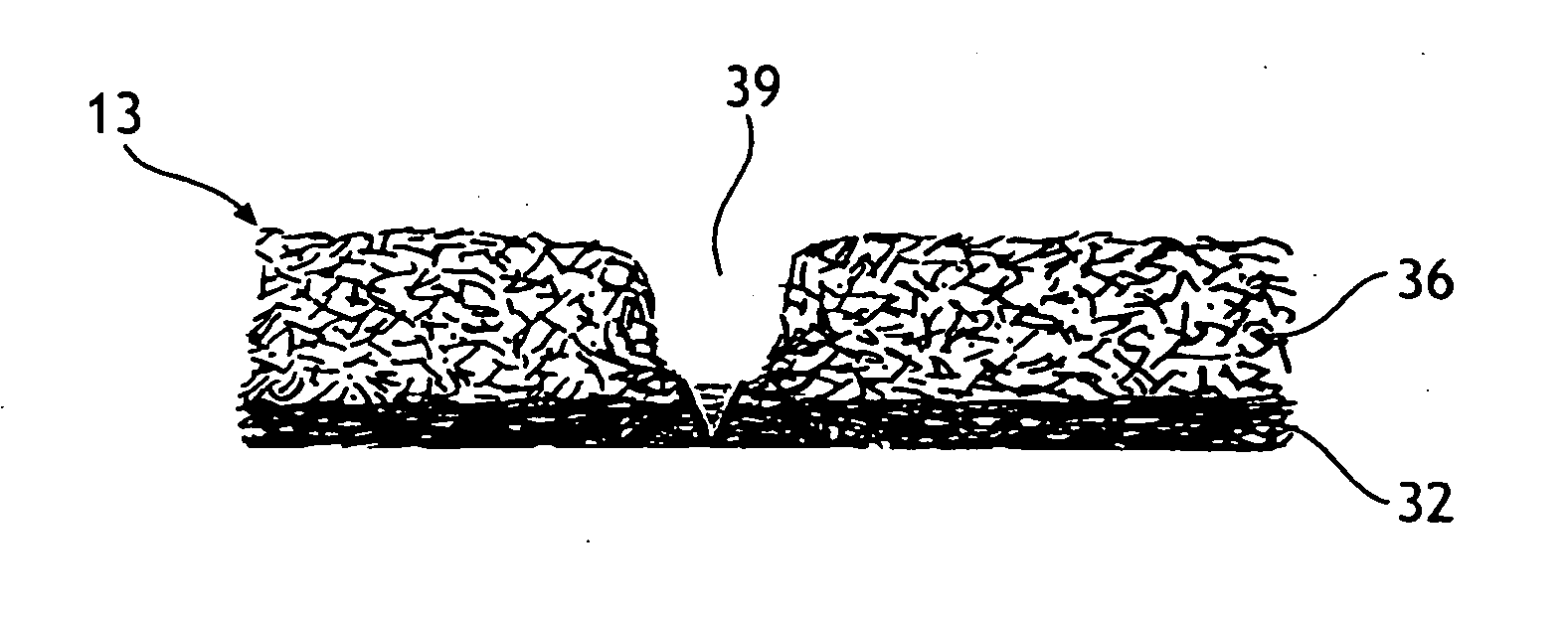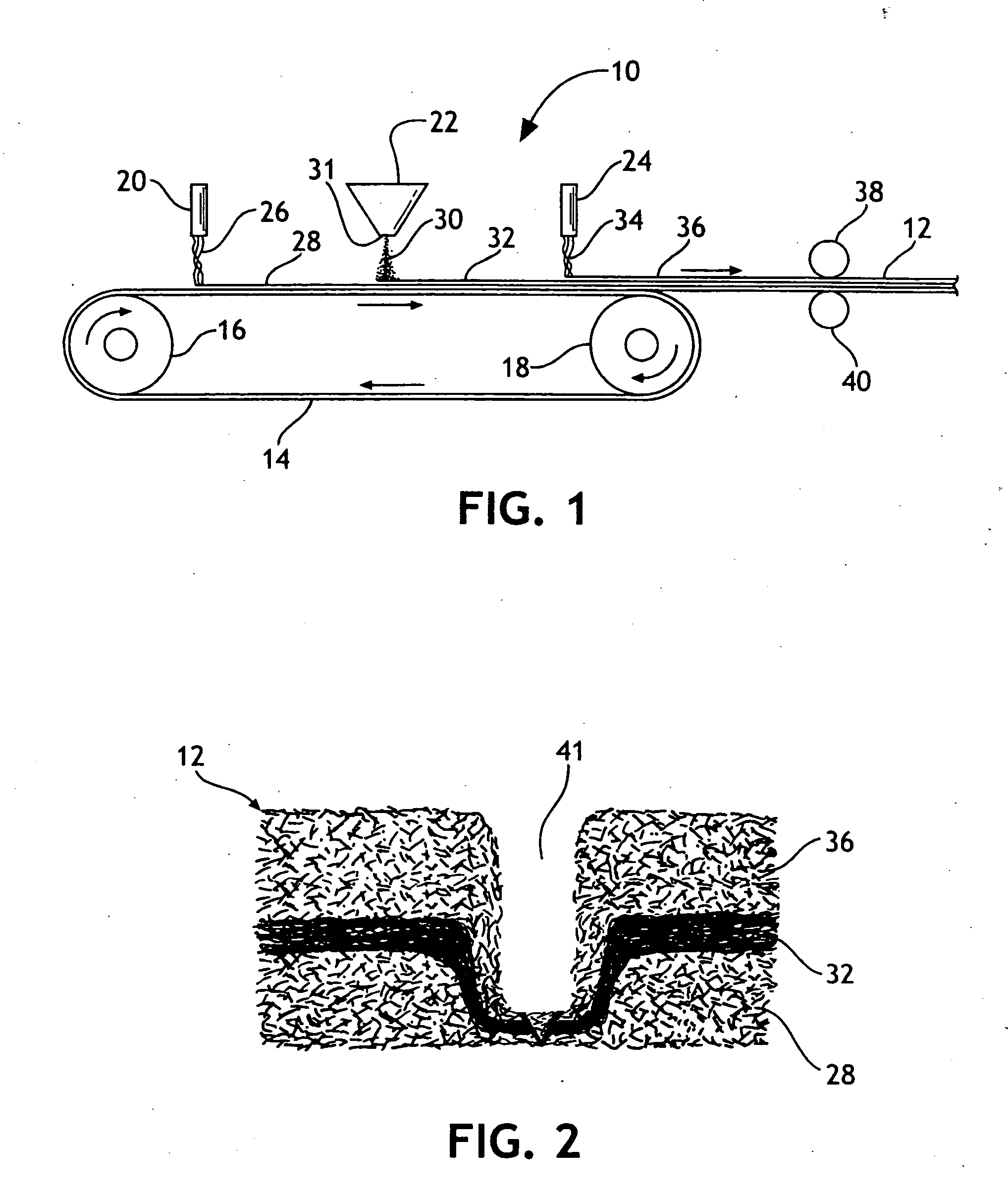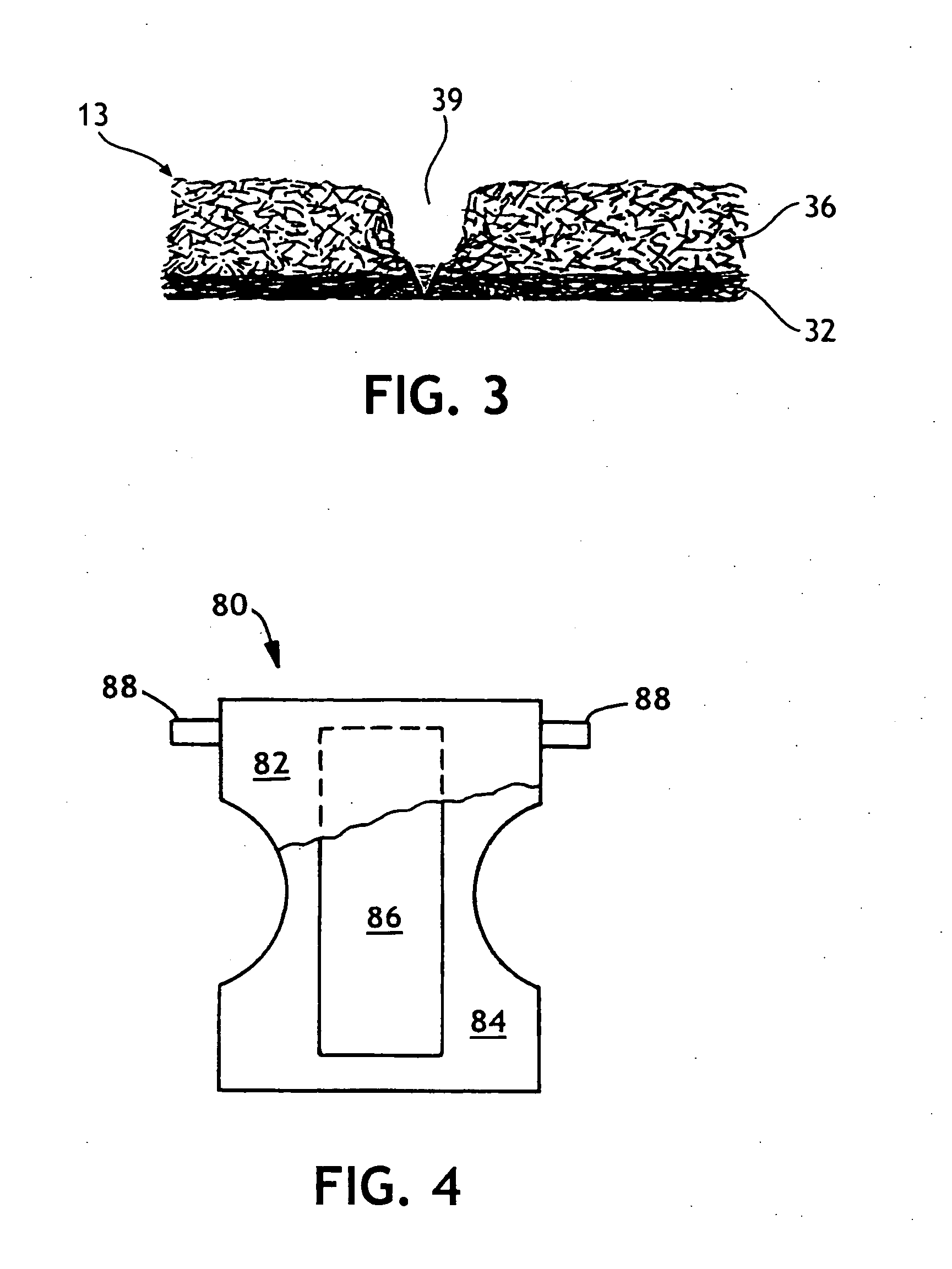Nonwoven fabrics for use in personal care products
- Summary
- Abstract
- Description
- Claims
- Application Information
AI Technical Summary
Benefits of technology
Problems solved by technology
Method used
Image
Examples
example 1a and 1b
0.2 and 0.4 Osy, Respectively
[0087] Necked spunbond layer(s) and no surfactant in KRATON® meltblown layer. SB layers treated with 1 percent AHCOVEL.
example 2a and 2b
0.2 and 0.4 Osy, Respectively
[0088] Necked and creped spunbond layer(s) treated with 1% AHCOVEL and no surfactant in KRATON® meltblown layer.
example 3b
0.4 Osy
[0089] Necked spunbond layer(s) and no surfactant in KRATON® meltblown layer. The entire nonwoven composite of Example 3B was measured for pore size distribution characterization to predict superabsorbent particle (SAP) strikethrough. Example 3B (having a 0.4 osy MB elastomeric layer) was measured for pore size and percent open area using the test method described above. The MB layer of Example 3B was measured as having an equivalent-circular diameter (ECD) of 40.52 μm and a standard deviation of 23.40. The convoluted pore width CPW was measured at 25.27 μm. The percent open area was measured at 11.63%. In addition, the area-weight CPW was 46.18 μm. In contrast, a standard SMS laminate with a 0.4-osy polyolefin MB layer made under similar conditions had an ECD of 47.26 μm with a standard deviation of 31.43, a CPW of 25.75 μm, a percent open area of 16.07 and area-weight CPW of 49.43 μm. A standard SB liner that consisted essentially of a 0.4-osy polypropylene MB layer made u...
PUM
 Login to View More
Login to View More Abstract
Description
Claims
Application Information
 Login to View More
Login to View More - R&D
- Intellectual Property
- Life Sciences
- Materials
- Tech Scout
- Unparalleled Data Quality
- Higher Quality Content
- 60% Fewer Hallucinations
Browse by: Latest US Patents, China's latest patents, Technical Efficacy Thesaurus, Application Domain, Technology Topic, Popular Technical Reports.
© 2025 PatSnap. All rights reserved.Legal|Privacy policy|Modern Slavery Act Transparency Statement|Sitemap|About US| Contact US: help@patsnap.com



